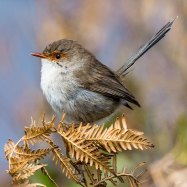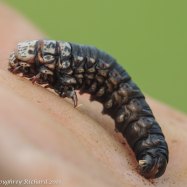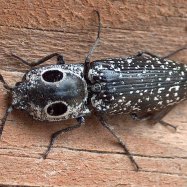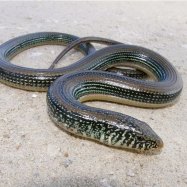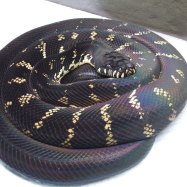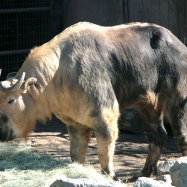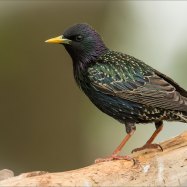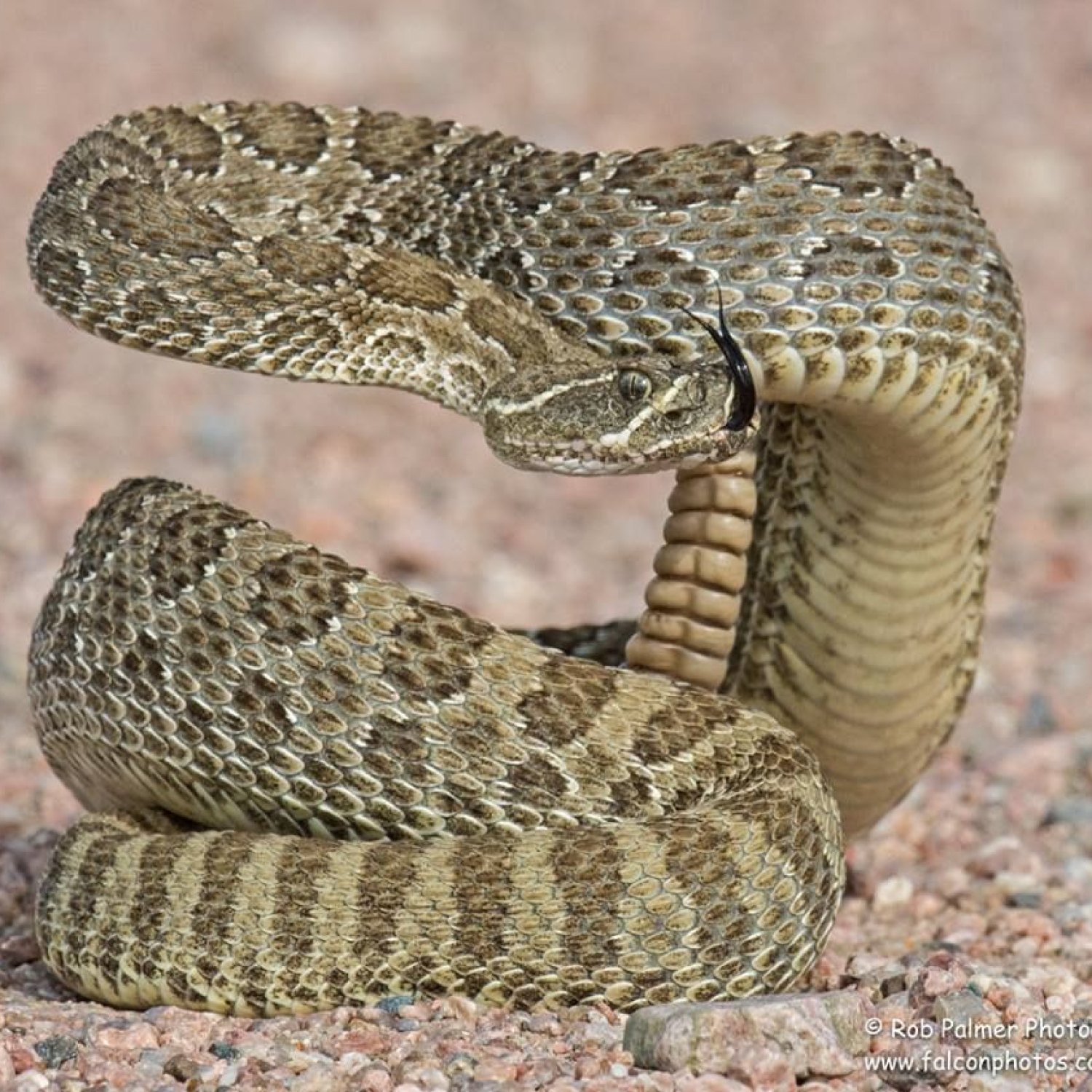
Prairie Rattlesnake
2 to 4 feet (0.6 to 1.2 meters)
The Prairie Rattlesnake, commonly found in western and central parts of North America, is a member of the Viperidae family. With a length of 2 to 4 feet, this slender snake is known for its distinctive triangular-shaped head and notorious rattling sound. Despite its venomous reputation, the Prairie Rattlesnake plays a vital role in controlling rodent populations in its habitat. Keep a safe distance and admire this magnificent creature from afar when exploring the great outdoors. #PrairieRattlesnake #Viperidae #WildlifeFacts
Animal Details Summary:
Common Name: Prairie Rattlesnake
Kingdom: Animalia
Habitat: Grasslands, prairies, deserts, and rocky areas
The Mysterious and Misunderstood Prairie Rattlesnake: Exploring the Beauty and Complexity of Nature
The snake is one of the most feared creatures in the animal kingdom. With their slithery movement, forked tongues, and venomous bite, it's no wonder that they have been portrayed as symbols of danger and evil in many cultures. However, not all snakes are dangerous, and not all are disliked by humans. The Prairie Rattlesnake, scientifically known as Crotalus viridis and commonly referred to as the Prairie Rattlesnake, is a perfect example of a beautiful and misunderstood snake Prairie Rattlesnake. In this article, we will delve into the features of this intriguing reptile, and hopefully, you will come to appreciate its unique characteristics and importance in the ecosystem.The Basics: Taxonomy and Distribution
The Prairie Rattlesnake is a member of the Animalia Kingdom, Chordata phylum, and Reptilia class. It belongs to the Squamata order, which includes lizards, snakes, and worm lizards. Within the Squamata order, the Prairie Rattlesnake falls under the Viperidae family, which consists of venomous snakes with two main subfamilies - the Viperinae and Crotalinae (also known as pit vipers). The Crotalinae subfamily includes pit vipers found in North and South America, and the Prairie Rattlesnake is one of the 15 species found in this group.The Prairie Rattlesnake is native to North America, with its distribution centered in the United States, Canada, and Mexico. It is mainly found in the western and central parts of North America, particularly in the Great Plains region, from Alberta and British Columbia in Canada, to Texas and Arizona in the United States, and to Chihuahua and Durango in Mexico. It is a versatile species that can adapt to different environments, which is why it can be found in a variety of habitats, including grasslands, prairies, deserts, and rocky areas.
A Carnivore's Diet
Like all snakes, the Prairie Rattlesnake is a carnivore, which means that it primarily feeds on other animals Panthera Atrox. Its main prey includes rodents, birds, and lizards, but it has also been known to eat insects, frogs, and other snakes. The Prairie Rattlesnake is an ambush predator, meaning it waits for its prey to pass by before quickly striking with its venomous bite. The venom of the Prairie Rattlesnake is a specialized saliva that immobilizes its prey, making it easier to consume. It also helps in digesting the food, as it contains enzymes that break down the prey's tissues.Interestingly, the Prairie Rattlesnake can go for weeks or even months without eating, as it has the ability to slow down its metabolism and conserve energy. This is especially useful during the colder months when food sources are scarce, and the snake needs to hibernate.
The Fascinating Physical Features of the Prairie Rattlesnake
The Prairie Rattlesnake is a fascinating creature, with many unique physical features that make it stand out from other snakes. One of the most distinct features of this species is its coloration. It is typically green or green-gray, with dark diamond-shaped blotches along its back. The coloration helps it blend in with its surroundings, making it a master of camouflage. However, depending on its habitat and geographical location, the Prairie Rattlesnake may also have brown, yellow, or even red coloration.In addition to its coloration, the Prairie Rattlesnake also has a slender body and a triangular-shaped head. The head is larger than the neck and contains the snake's venom glands and fangs. It uses its fangs to inject venom into its prey, which immobilizes and kills the prey within minutes. The size of the Prairie Rattlesnake can vary, but on average, it ranges from 2 to 4 feet (0.6 to 1.2 meters) in length, with some individuals reaching up to 6 feet (1.8 meters).
Another unique feature of the Prairie Rattlesnake is its rattle, located at the end of its tail. The rattle is made up of interlocking segments of keratin, the same protein that makes up our hair and nails. Each time the snake sheds its skin, a new segment is added to the rattle, making it longer and louder. The rattle serves as a warning device, alerting potential predators or humans of the snake's presence. Contrary to popular belief, snakes do not use their rattle to attack their prey, but rather as a defense mechanism to avoid confrontation.
The Importance of Prairie Rattlesnakes in the Ecosystem
Many people view snakes, especially venomous ones like the Prairie Rattlesnake, as pests or threats to humans. However, snakes play a crucial role in our ecosystem, and their presence is essential for maintaining a balance in nature. As predators, they help control the population of their prey, preventing overpopulation that can lead to the depletion of resources and potential diseases.In addition, the Prairie Rattlesnake also serves as prey for other animals, such as birds of prey and mammals, contributing to the food chain. Their venom, although harmful to humans, is also used to immobilize and kill prey, making them an integral part of the ecosystem. Without snakes like the Prairie Rattlesnake, the delicate balance of the ecosystem would be disrupted.
Why We Need to Protect and Appreciate the Prairie Rattlesnake
Despite the importance of snakes in our ecosystem, they are continuously facing threats from humans. Many people see them as pests and kill them on sight, without understanding their essential role in nature. In addition, the increasing human development in the areas where snakes live has resulted in habitat loss and fragmentation, making it more challenging for snakes to find suitable habitats and prey.Furthermore, as more people move to areas where snakes live, the risk of snake-human encounters also increases. This often leads to snakebites, which can be deadly if not treated immediately. As a result, snakes like the Prairie Rattlesnake are often killed out of fear and ignorance, disrupting the crucial role they play in the ecosystem.
To protect and conserve the Prairie Rattlesnake, and other essential snake species, it is essential to educate the public about the importance of these creatures and how to coexist with them safely. This includes understanding snake behavior, avoiding areas where snakes may be present, and seeking professional help in removing snakes from homes or other areas. Furthermore, it is crucial to preserve their natural habitats and prevent further destruction and fragmentation of their habitats.
In Conclusion
In conclusion, the Prairie Rattlesnake is a fascinating and essential member of our ecosystem. Its unique features and adaptations make it a marvel of nature, yet it is one of the most misunderstood and feared creatures. By learning more about the Prairie Rattlesnake and promoting its conservation, we can not only protect this beautiful species but also contribute to maintaining a delicate balance in nature. Remember, snakes play a vital role in our ecosystem, and it is up to us to appreciate and protect them for future generations to come.

Prairie Rattlesnake
Animal Details Prairie Rattlesnake - Scientific Name: Crotalus viridis
- Category: Animals P
- Scientific Name: Crotalus viridis
- Common Name: Prairie Rattlesnake
- Kingdom: Animalia
- Phylum: Chordata
- Class: Reptilia
- Order: Squamata
- Family: Viperidae
- Habitat: Grasslands, prairies, deserts, and rocky areas
- Feeding Method: Carnivorous
- Geographical Distribution: North America
- Country of Origin: United States, Canada, and Mexico
- Location: Western and central parts of North America
- Animal Coloration: Typically green or green-gray with dark diamond-shaped blotches along the back
- Body Shape: Slender body and a triangular-shaped head
- Length: 2 to 4 feet (0.6 to 1.2 meters)
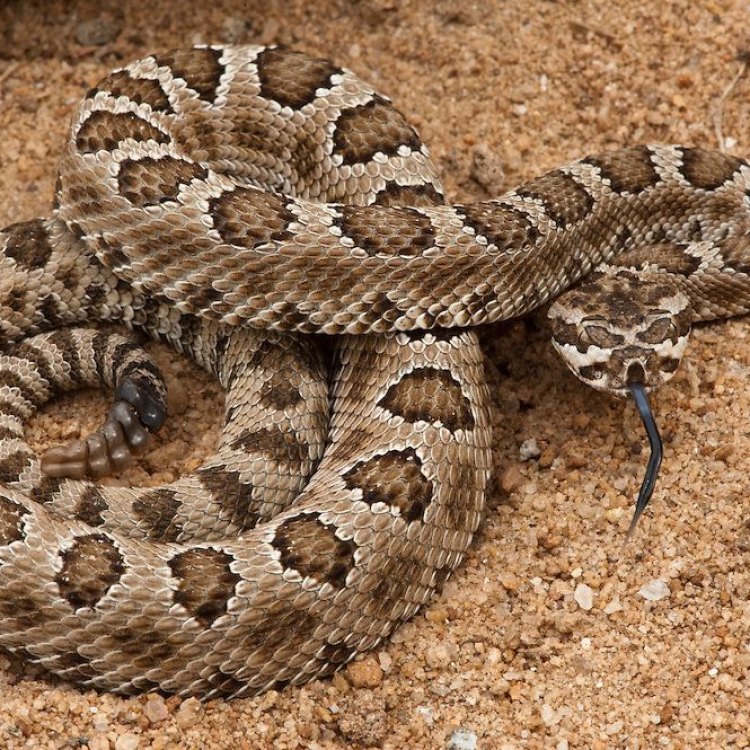
Prairie Rattlesnake
- Adult Size: 3 to 4 feet (0.9 to 1.2 meters)
- Average Lifespan: 10 to 20 years in the wild
- Reproduction: Sexual
- Reproductive Behavior: Mating occurs in the spring or fall
- Sound or Call: Rattle sound produced by the tail
- Migration Pattern: Non-migratory
- Social Groups: Solitary
- Behavior: Nocturnal and secretive
- Threats: Habitat loss, human persecution, and road mortality
- Conservation Status: Least Concern
- Impact on Ecosystem: Plays a role in controlling rodent populations
- Human Use: Sometimes collected for the pet trade or used in snake antivenom production
- Distinctive Features: Rattle on the tail
- Interesting Facts: Prairie rattlesnakes have heat-sensing pits on their faces that help them detect warm-blooded prey
- Predator: Predators include larger snakes, birds of prey, and mammalian predators
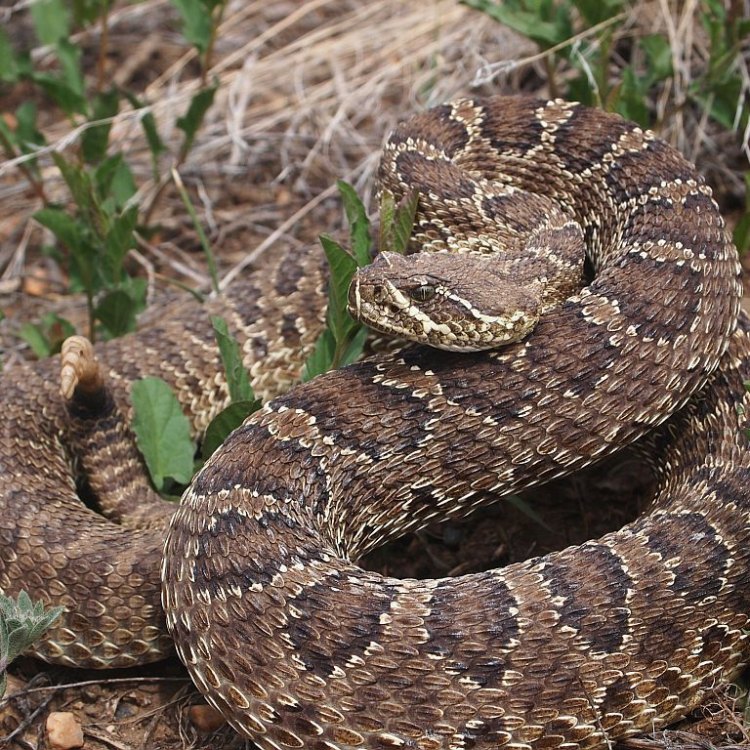
Crotalus viridis
The Mysterious and Misunderstood Prairie Rattlesnake
When we think of rattlesnakes, our minds often conjure up images of the desert, with its dry, scorching heat and vast, sandy landscapes. But did you know that rattlesnakes also inhabit vast prairie regions, with their tall grasses and diverse ecosystems? The Prairie Rattlesnake (Crotalus viridis), also known as the western rattlesnake, is a fascinating species that calls the prairies of North America its home.Standing at 3 to 4 feet in length (0.9 to 1 PeaceOfAnimals.Com.2 meters), the Prairie Rattlesnake is a medium-sized snake that can be found in a variety of habitats, from grasslands and meadows to rocky areas and even forests. While they typically prefer dry, open areas, they can also be found in wetter habitats like marshes and swamps. Their coloration can vary, but most Prairie Rattlesnakes have a greenish or olive-brown base color with dark blotches along their body. They also have dark, diamond-shaped patterns along their back and a characteristic rattle on their tail, which gives them their name.
But there is so much more to this enigmatic species than just their distinctive rattle. In this article, we'll delve into the unique features, behaviors, and threats facing the Prairie Rattlesnake, shedding light on this often-misunderstood reptile.
Reproduction and Mating Behavior
Like most snakes, Prairie Rattlesnakes are sexual and reproduce through internal fertilization. Unlike many other species, they have a fascinating reproductive behavior that occurs in the spring or fall. Males participate in a ritualized form of combat, where they engage in a "dance" to determine dominance and assert their right to mate Pileated Woodpecker. This dance involves intertwining their bodies and pushing and shoving with their heads.Once a male has successfully courted a female, they will breed and then part ways. Males do not stick around for the birth and have no role in raising the young, leaving the females to carry the burden of pregnancy and care for their offspring alone.
The Importance of the Rattle
One of the most striking features of the Prairie Rattlesnake is their rattle. Made of keratin, the same material as our nails, the rattle is located at the end of their tail and is used as a defense mechanism. When threatened, the snake will vibrate its tail, creating a buzzing sound that alerts potential predators of its presence. This serves as a warning to back off, and if the predator does not heed the warning, the snake may strike with its venomous fangs.But contrary to popular belief, the rattlesnake's rattle is not just a warning – it is also a tool for communication. Snakes have been observed using their rattle to communicate with nearby snakes, whether it be for mating or to warn of potential threats in the area. This complex form of communication highlights the intelligence and adaptability of these creatures.
Interestingly, not all rattlesnakes are born with their characteristic rattle. It is formed after a few weeks of shedding the outer layer of their tails, with a new segment of the rattle added each time. This goes to show that the rattle is not just a decorative feature, but an essential tool for the survival of this species.
Nocturnal and Solitary
Prairie Rattlesnakes are primarily nocturnal, meaning they are most active during the night. This behavior is likely due to their need to conserve energy during the hot summer days and avoid predators. They are also solitary creatures, only coming together during the breeding season. Outside of this time, they prefer to be alone and do not engage in social behaviors.As solitary and elusive creatures, it can be quite challenging to spot a Prairie Rattlesnake in the wild. They are excellent at hiding and have a unique behavior known as "cryptic behavior," where they blend in with their surroundings to avoid detection. This behavior, combined with their nocturnal nature, makes them elusive and mysterious creatures that are rarely seen.
Threats and Conservation Status
Like many other species, the Prairie Rattlesnake faces threats to its survival. Habitat loss due to human development and agriculture is a significant concern for this species. As prairies continue to be converted into farmland and urban areas, the homes of these snakes are disappearing, leaving them with less space to thrive.Another threat to the Prairie Rattlesnake is human persecution. Due to fear and misunderstanding, many people perceive rattlesnakes as a danger and kill them on sight. However, it's important to note that rattlesnakes will only strike as a last resort, and their venom is used primarily for hunting prey, not for attacking humans. Education and proper management techniques can help mitigate this threat and promote coexistence between humans and this unique species.
Road mortality is also a significant concern for the Prairie Rattlesnake, as they often cross roads during their nocturnal travels. Unfortunately, many are killed by vehicles, disrupting their population and potentially destabilizing the ecosystem.
Despite these threats, the Prairie Rattlesnake is currently listed as a species of "least concern" on the International Union for Conservation of Nature's Red List. Thanks to conservation efforts and the snake's adaptability, their population remains stable in most areas. However, continued monitoring and conservation efforts are needed to ensure their long-term survival.
The Role in Ecosystems and Human Use
The Prairie Rattlesnake plays an important role in maintaining a balanced and healthy ecosystem. As ambush predators, they help control the population of rodents, such as mice and rats, which can cause damage to crops and spread diseases. By keeping these populations in check, the Prairie Rattlesnake helps maintain a thriving ecosystem where other plants and animals can thrive.Unfortunately, some humans also see the Prairie Rattlesnake as a commodity and collect them for the pet trade or use them in the production of snake antivenom. While these practices are not as prevalent as they once were, they can still have a negative impact on the species.
Unique Features and Fun Facts
Apart from their rattle, there are many other unique features and fun facts about the Prairie Rattlesnake that make them an intriguing species to study. Did you know that they have heat-sensing pits on their faces that help them detect warm-blooded prey, such as mice and rabbits, even in the dark? These pits, called "loreal pits," allow them to locate and strike at their prey with incredible accuracy.Speaking of striking, the Prairie Rattlesnake has a lightning-fast strike that can reach a human's ankle in as little as 0.18 seconds! This makes them one of the fastest-striking snakes in the world, with an attack speed five times faster than the blink of an eye.
Another fascinating fact about the Prairie Rattlesnake is that they can give birth to up to 15 babies at a time. Their offspring are born ready to fend for themselves, which is essential as they do not receive any parental care. These babies are miniature replicas of their parents, complete with a rattle, and are born venomous right from the start.
Predators of the Prairie Rattlesnake
While Prairie Rattlesnakes may have a powerful venom, they are not invincible and do have predators in their ecosystem. Larger snakes, such as king snakes, can overpower and kill rattlesnakes, while birds of prey, like hawks and eagles, can swoop down from above to snatch them up. Mammalian predators, such as coyotes and foxes, also pose a threat to these snakes.However, the Prairie Rattlesnake has evolved various defense mechanisms to protect itself from these predators. Their cryptic behavior and nocturnal habits help them avoid detection by birds of prey. And if they do encounter a larger predator, they can use their rattle as a warning and their venom as a last resort.
Conclusion
The Prairie Rattlesnake is a mysterious and misunderstood creature that is an integral part of the prairie ecosystems. With their unique behaviors, reproductive patterns, and distinctive rattle, it's no wonder that these snakes have captured the fascination of scientists and nature lovers alike.As we continue to learn more about this species, it's essential to remember that they are not to be feared but respected and admired for their crucial role in maintaining a balanced ecosystem. By promoting coexistence and implementing conservation efforts, we can ensure the continued survival of this species for future generations to appreciate and learn from.
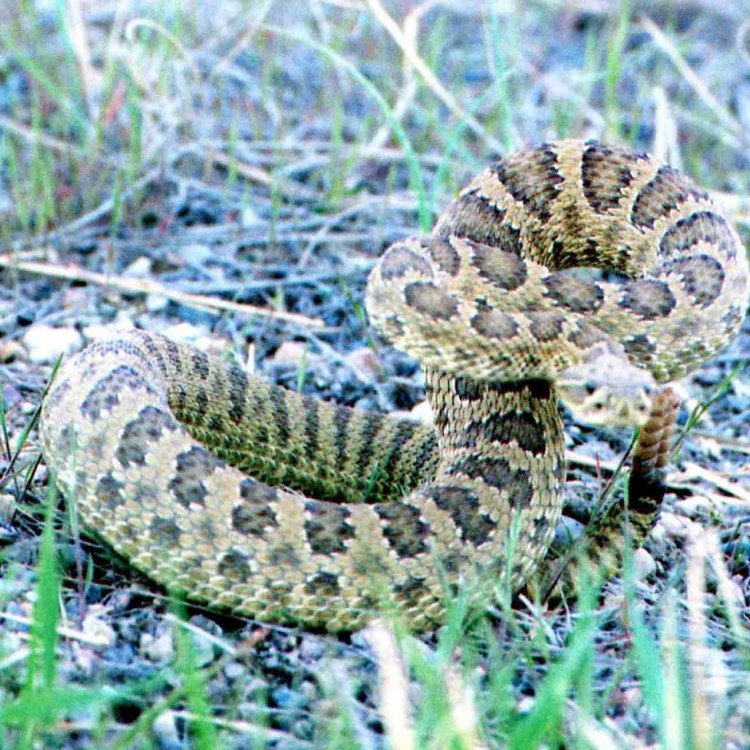
The Mysterious and Misunderstood Prairie Rattlesnake: Exploring the Beauty and Complexity of Nature
Disclaimer: The content provided is for informational purposes only. We cannot guarantee the accuracy of the information on this page 100%. All information provided here may change without prior notice.




